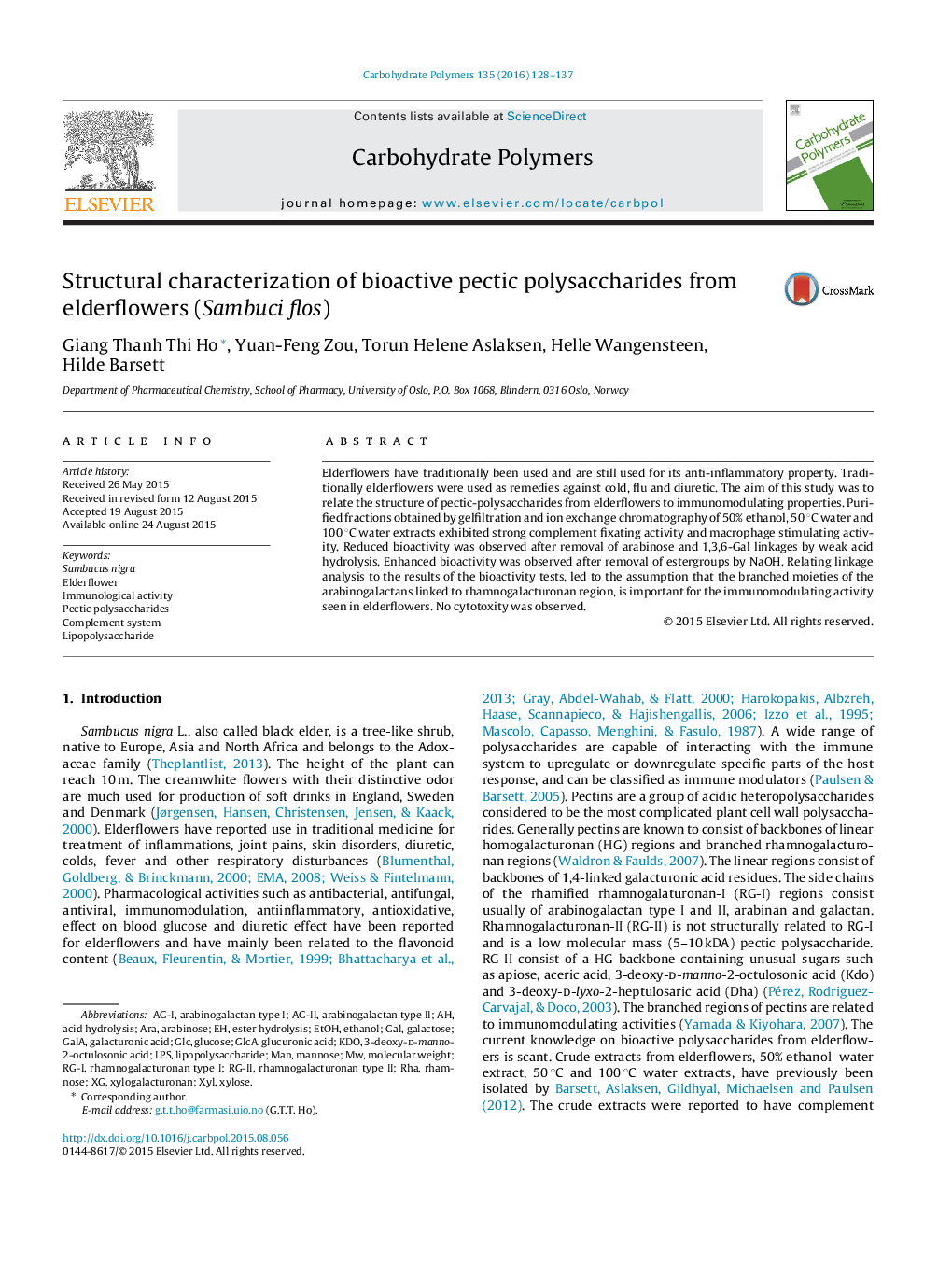| Article ID | Journal | Published Year | Pages | File Type |
|---|---|---|---|---|
| 1383553 | Carbohydrate Polymers | 2016 | 10 Pages |
•Immunomodulating polysaccharides were isolated from the elderflowers (Sambuci flos L.).•Structural characterizations of pectins from elderflowers are reported.•Structural modifications such as removal of arabinose and ester influenced the bioactivities.•No toxicity against brine shrimp larvae and RAW 264.7 cells in the tested samples.•LPS seems to have minor impact on NO production observed in the active fractions.
Elderflowers have traditionally been used and are still used for its anti-inflammatory property. Traditionally elderflowers were used as remedies against cold, flu and diuretic. The aim of this study was to relate the structure of pectic-polysaccharides from elderflowers to immunomodulating properties. Purified fractions obtained by gelfiltration and ion exchange chromatography of 50% ethanol, 50 °C water and 100 °C water extracts exhibited strong complement fixating activity and macrophage stimulating activity. Reduced bioactivity was observed after removal of arabinose and 1,3,6-Gal linkages by weak acid hydrolysis. Enhanced bioactivity was observed after removal of estergroups by NaOH. Relating linkage analysis to the results of the bioactivity tests, led to the assumption that the branched moieties of the arabinogalactans linked to rhamnogalacturonan region, is important for the immunomodulating activity seen in elderflowers. No cytotoxity was observed.
